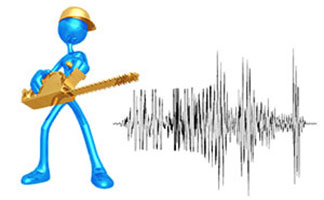Compression: What Needs It And What Doesn’t?

I’ve talked about compression quite a lot because it is an excellent, useful, and very powerful tool in your audio recording arsenal. But like anything powerful, you can also use too much.
For a review of what compression is, see these Home Brew Audio Articles:
Vocal Compression Using Reaper’s ReaComp Effect Plugin
Improve Or Ruin Your Audio With an Effect Called Compression, and
Should You Use Compression In Audio Recording?
Those will give you the basics of what compression is. The last one has a white-board video of me explaining the concept.
Know Why
Important! Only use compression (or any audio effect, for that matter) if you know WHY you’re using, and can tell whether it did what you wanted after you apply it. You’d be surprised how many people use compression “because they think they should,” and not with any particular objective in mind. OK, moving on…
Like with most tools, you don’t always want to compress every sound source in your recording. The main job of a compressor is to even out audio levels or loudness.
So if you have something that has some loud parts and some really quiet parts, it probably could benefit from some compression so that the person listening to it doesn’t have to turn it up when it’s too quiet, and then turn it down again when it’s too loud. Compression does that for you. That’s its job.
The human voice is pretty dynamic, meaning we express ourselves with our voices with a large variety of loud and very soft sounds.
So a pretty good rule of thumb is that a lead vocal in a song will almost always benefit from at least some compression. Acoustic guitar can also be quite variable in volume and is also usually a good candidate for compression. Likewise with drums (especially the audio from drum overhead mics, which capture the entire kit).
What else besides the voice?
But other things may rarely need compression. I’d say that electronic keyboards and their software synthesizer cousins are rarely in need of much, if any compression. Electric guitar often does not NEED compression, per se. But there are other results – sort of like side-effects – that you can use compression for, like adding punch or sustain to enhance the way something sounds. Electric guitar is often the recipient of such treatment. For example, if you are familiar with the electric guitar sound of the group, Boston, you have heard super-compressed electric guitar.
At the end of the day, though, you need to be the judge of what should be compressed and what shouldn’t when it comes to your mixes. Oh yeah, I forgot to mention final mixes. Those almost always benefit from some compression as well. Anyway, as I was saying, you should use your own ears and judgement on using compression.
Be very careful!
And when you DO use it, be careful! Too much compression (using extreme settings) can cause unpleasant artifacts (a fancy way of saying unwanted sounds) like unnatural “pumping” where the audio attack and release cause the audio to sound even more uneven than before (ironically).
Another thing that is common with vocal over-compression is excess sibilance, where all the “S’s” started sounding way too hot. So avoid hissing and pumping vocals by using compression responsibly;).
If you have any other examples of when and when not to use compression, please leave a comment below. We’d love to hear from you.
Cheers!
Ken

[…] Compression: What Needs It And What Doesn’t? […]